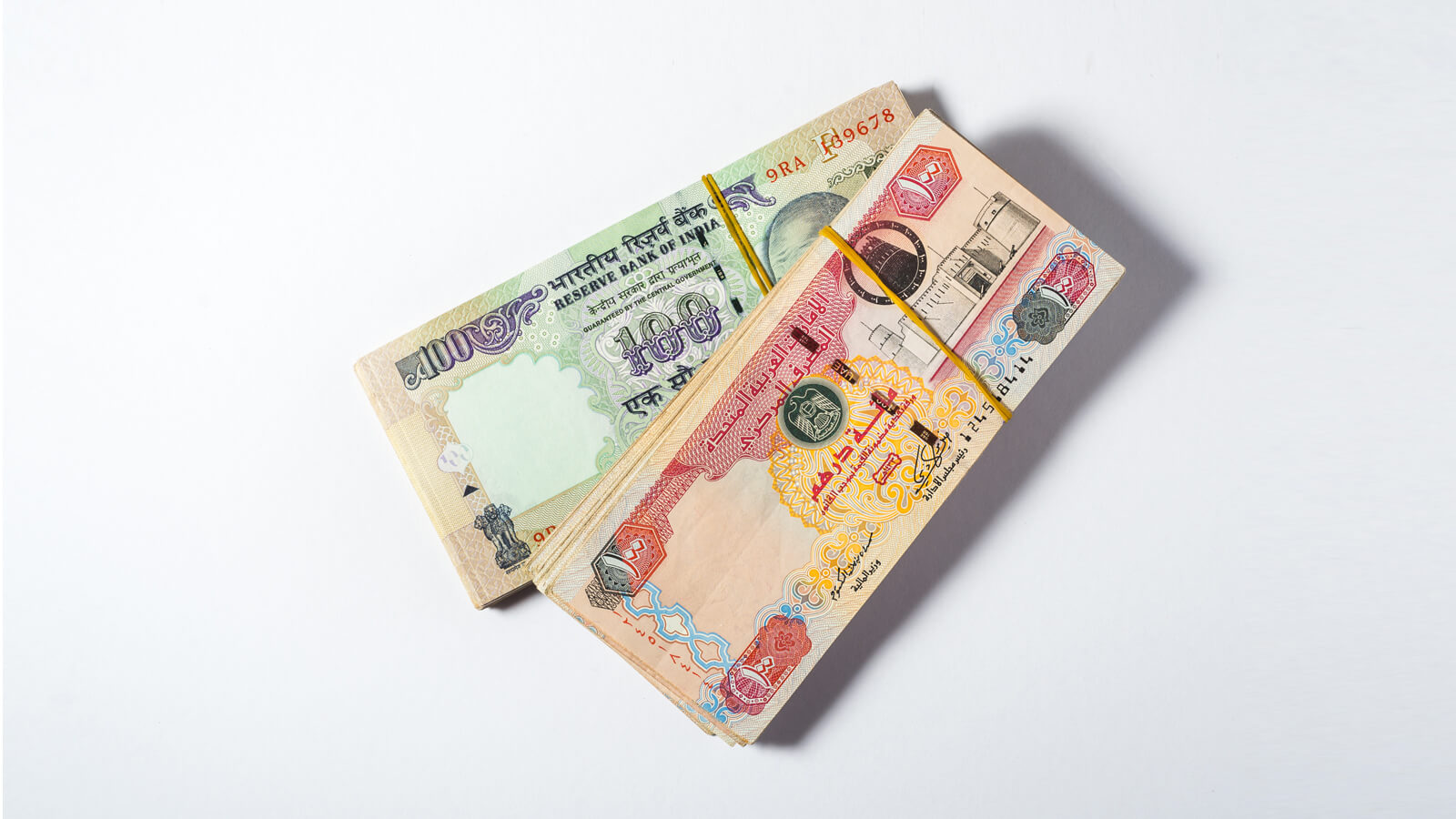What the India-UAE currency swap means for businesses in the region?

What the India-UAE currency swap means for businesses in the region?
Over the past two decades, cross-border trade between India and the UAE has risen. As a result, exports from the UAE to India have grown at an annualized CAGR of 12.7% — from $1.1 billion in 1995 to $22.1 billion in 2020. Against the backdrop of this scenario, these two regions have entered into currency swap agreements and bilateral trade pacts to strengthen cross-border trade along this route
What is a currency swap?
To make the most of such international contracts, businesses in the regions involved need to know what the terminologies and jargon mean. In the context of a currency swap agreement, it essentially involves two parties entering into a contract to exchange an equivalent amount in their respective currencies directly. They do not benchmark either currency against a third standard currency (typically, the US dollar).
The benefits of currency swap
Currency swap agreements benefit the countries involved as well as the businesses therein in several ways. Foremost among these advantages is the facilitation of more straightforward trade between the two regions. Additionally, the currencies involved are strengthened, and the accompanying trade risk is reduced.
Aside from these direct benefits, currency swap agreements cement the trust between the two regions, opening up more cross-border trade opportunities. This could give small businesses and startups a platform to expand their trade beyond local markets and enter the export business.
Decoding the India-UAE currency swap agreement
Towards the end of 2018, India and the UAE entered into a currency swap agreement to facilitate direct trade between the two regions — without using any third benchmark currency. This bilateral currency swap was for a sum equivalent to ₹35 billion or 2 billion dirhams, which was expected to boost the two local currencies.
In February 2022, India and the UAE signed a bilateral trade pack, the Comprehensive Economic Partnership Agreement (CEPA). Touted as the most significant trade agreement between the two regions, it could enable more efficient trade across the India-UAE border as the world opens up post-COVID.
Benefits of such agreements for businesses in the UAE
In the next five years, the CEPA is expected to boost bilateral trade in goods to over $100 billion and in services to over $15 billion. This, coupled with the impact of the currency swap agreement signed in 2018, will undoubtedly have a positive cascading effect on businesses in the UAE.
For one thing, it will strengthen the buyer-supplier relationships across the India-UAE border. In addition, both established ventures and small businesses get the advantage of enhanced market access abroad, so they are poised to scale greater heights and expand into newer market segments. It also enables more competitive trade between the two countries, resulting in huge business savings since the currency conversion bypasses the US dollar. Lastly, the currency swap agreement could also indirectly facilitate smoother supply chain movements between large and small businesses in India and the UAE.
As borders blur, streamlining e-procurement is key
If your business is based in the UAE, Moglix can help you with this. With comprehensive digital supply chain solutions that are future-facing and aligned with the UAE’s vision for the years to come, we enable businesses in the region to streamline their e-procurement procedures and strengthen supplier relationships. Get in touch with us to learn more.
3 reasons to perform procurement spend analytics

3 reasons to perform procurement spend analytics
What are you buying? Whom are you buying from?
How much have you spent on it, and how do the outlays compare to last year?
As an e-procurement professional today, these are only some of the many questions you will need the answers to. This is because monitoring and managing spend across the supply chain are integral to procurement leadership. And spend analytics can help you here.
What is spend analytics in procurement?
Spend analytics is gathering data related to an organization’s expenses, sorting, grouping and classifying that data, and then analyzing it to gather meaningful insights on where every penny goes. The end goal is to optimize costs and maximize profits.
3 key reasons you need procurement spend analytics
Spend analytics is pivotal in controlling and optimizing expenses in the procure-to-pay cycle. Here are 3 key reasons procurement leaders of today should prioritize this process.
1. Improved spend intelligence
With a robust spend analytics program, you get improved visibility of the costs incurred on procurement. Spending intelligence such as this can be crucial to reviving and optimizing your business supply chain. It also allows you to make more confident spending decisions because you are aware of how much your business is spending.
2. Easier identification of savings opportunities
E-procurement coupled with spend analytics also makes it possible for you to identify the areas that hold great potential for cost savings. By cost-cutting where you can and having a flexible procurement budget where needed, your business can benefit from incremental savings that stem from smart expense optimization.
3. Better supplier relationship management
Vendor management is pivotal to building profitable supplier relationships across the procurement cycle. And the information gathered from your data analytics processes can be invaluable in this regard. As a procurement professional today, you can use the insights gathered to partner with suppliers who meet specific criteria, promote supplier development, and build better relationships with your vendors.
Another challenge that procurement managers face is understanding KPIs they need to track to understand spends better. The key performance indicators (KPIs) to measure the effectiveness of your organization’s procurement spend analytics include:
● Cost savings
● Category-wise spending
● Supplier performance
● Vendor management
● Operational KPIs
Optimize your procurement with world-class spending analytics
Moglix offers intelligent spend benchmarking solutions that allow you to compare your procurement expenses with industry benchmarks and optimize your spending. Contact us today to know more about how our spend analytics solutions can help you on your path to absolute digital transformation.
Make the transition to sustainable procurement with this 5-step guide

Make the transition to sustainable procurement with this 5-step guide
With ESG business practices gaining prominence worldwide, sustainable procurement may be more relevant than ever for your business. In theory, sustainable procurement is simple enough; it involves integrating ESG factors into your organization’s supply chain and procurement process. When done right, sustainable procurement can improve your brand reputation, promote better supplier relationships and increase profitability.
Data from the World Economic Forum shows us that sustainable business projects may lead to cost savings of 9% to 16% and can increase revenue by up to 20%. Research by Hackett also reveals that around 92% of companies are already poised to have a sustainable procurement program by 2023.
Your business can also join this league by adopting an immediate and effective action plan to make procurement more sustainable as we journey into a new year.
A simple, 5-step plan to achieve sustainable procurement
Here is what your business can do to make the transition from conventional to sustainable procurement faster and more effective.
1. Identify the critical areas in your supply chain.
Whether you follow conventional sourcing practices or have partial e-procurement implemented in your business, the first step to sustainability involves identifying the areas that matter. For most organizations, the critical areas in the supply chain include sourcing, negotiations, contract management, vendor management and payment, thus completing the procure-to-pay cycle.
2. Evaluate and define sustainable criteria for your business procurement
Once you have identified the key areas in your procurement cycle, evaluate how sustainable (or unsustainable) they are. This will give you a clear idea of how far you have come and how much you need to go. You can then define the sustainable criteria you must meet in each critical area of your supply chain.
3. Perform supplier due diligence
Supplier due diligence may be just as crucial as supplier relationships in the journey to a more sustainable future. Before you sign a contract with a potential supply partner, evaluate their commitment to sustainability and assess if you have shared business values. In the long run, this will make vendor management much more accessible and help you progress more quickly on the path to sustainability.
4. Develop the roadmap for sustainable sourcing
The next step to sustainable procurement is developing a roadmap that makes your strategy for the future clearer and easier to implement. First, identify the critical business practices you want to focus on to future-proof your supply chain sustainably. Automation, paperless contract management, digital transformation and strict adherence to your organization’s ESG goals are essential pillars of your strategy.
5. Roll out your plan and review it periodically.
To complete the action plan towards a more sustainable procurement process, you need to roll out your developed strategy and monitor its implementation. For best results, it is advisable to review your plan periodically, identify weak areas, if any, and work on strengthening sustainable practices within your procurement department.
Want to accelerate the shift to e-procurement and sustainability?
Moglix can help you with this. Our end-to-end procurement solutions can overhaul your supply chain procurement strategies an help on your path of digital transformation, while keeping in mind your sustainability goals. Contact us today to learn more about how this works

